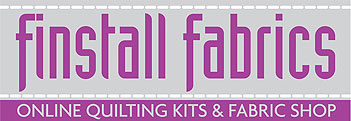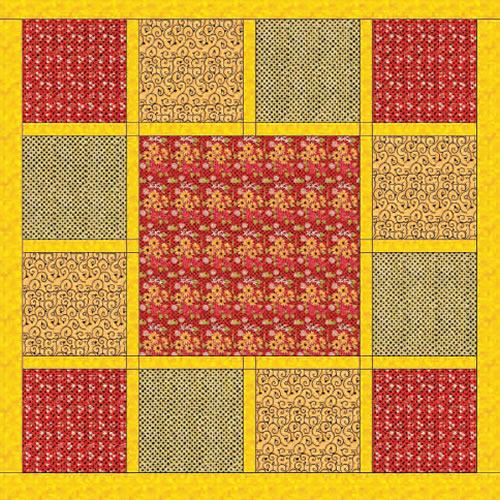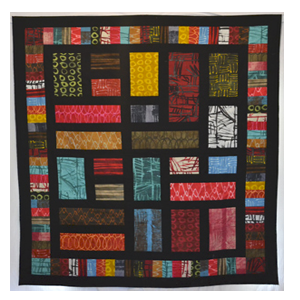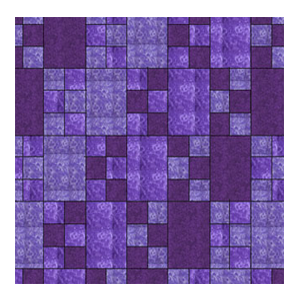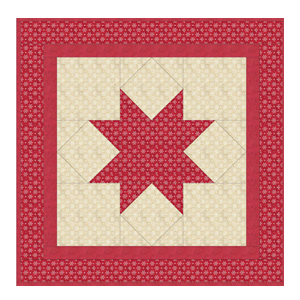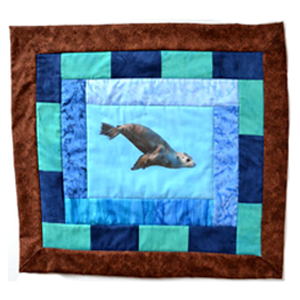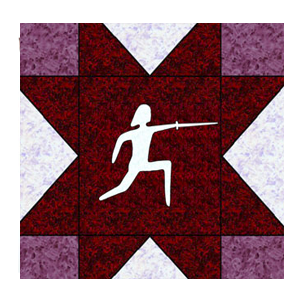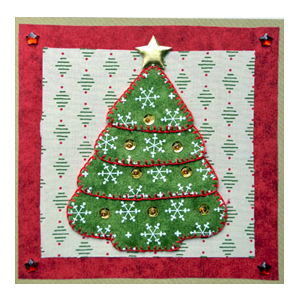How To - Your Questions Answered
We have compiled a comprehensive knowledge base of articles to help you with your quilting and design. Select an artlcle to read it.
Finish a Quilt with Square Corner Binding.
Square Corner binding is the most used and easiest binding type to do. Depending on the fabric used you may consider a single or double thickness binding. A double thickness may be needed if you are using a light fabric for binding onto dark fabric or a lightweight fabric onto a heavier weight.
Square Corner binding is the most used and easiest binding type to do. Depending on the fabric used you may consider a single or double thickness binding. A double thickness may be needed if you are using a light fabric for binding onto dark fabric or a lightweight fabric onto a heavier weight.
Single binding
- Measure the required width of your binding to allow for seam allowance and to allow for the thickness of the wadding.
- Cut straight strips of fabric either across the width or the length of your fabric. If you need a longer strip it can be joined by stitching on the diagonal and press seams open.
- To stitch binding to the quilt with a single binding, stitch one raw edge with your seam allowance from edge of quilt, then press over the wadding and fold the seam allowance on the back of the quilt before stitching with a slip stitch.
Single binding
- Measure the required width of your binding to allow for seam allowance and to allow for the thickness of the wadding.
- Cut straight strips of fabric either across the width or the length of your fabric. If you need a longer strip it can be joined by stitching on the diagonal and press seams open.
- To stitch binding to the quilt with a single binding, stitch one raw edge with your seam allowance from edge of quilt, then press over the wadding and fold the seam allowance on the back of the quilt before stitching with a slip stitch.
Double Binding
- Fold a strip in half, press to give a folded edge for stitching to the back.
- Stitch the raw edged side to the front of the quilt, fold over wadding and stitch to the backing using a slip stitch.
Double Binding
- Fold a strip in half, press to give a folded edge for stitching to the back.
- Stitch the raw edged side to the front of the quilt, fold over wadding and stitch to the backing using a slip stitch.
There is no correct order in which to stitch the binding- it is usual to stitch the top and bottom bindings before stitching the side bindings. The top and bottom bindings are the same width as the quilt whereas the side bindings need to be longer to incorporate the top and bottom bindings. Here are a couple of ways to do this:
- Trim the top and bottom bindings to the edge of the quilt, then stitch the side bindings.
- After stitching the top and bottom bindings, trim any excesss, fold bindings over the wadding and slip stitch to the backing then stitch the side bindings in place.
At the corners, turn the ends under first, the turn under the main side. Watch to make sure you have straight seams at the ends.
There is no correct order in which to stitch the binding- it is usual to stitch the top and bottom bindings before stitching the side bindings. The top and bottom bindings are the same width as the quilt whereas the side bindings need to be longer to incorporate the top and bottom bindings. Here are a couple of ways to do this:
- Trim the top and bottom bindings to the edge of the quilt, then stitch the side bindings.
- After stitching the top and bottom bindings, trim any excesss, fold bindings over the wadding and slip stitch to the backing then stitch the side bindings in place.
At the corners, turn the ends under first, the turn under the main side. Watch to make sure you have straight seams at the ends.


